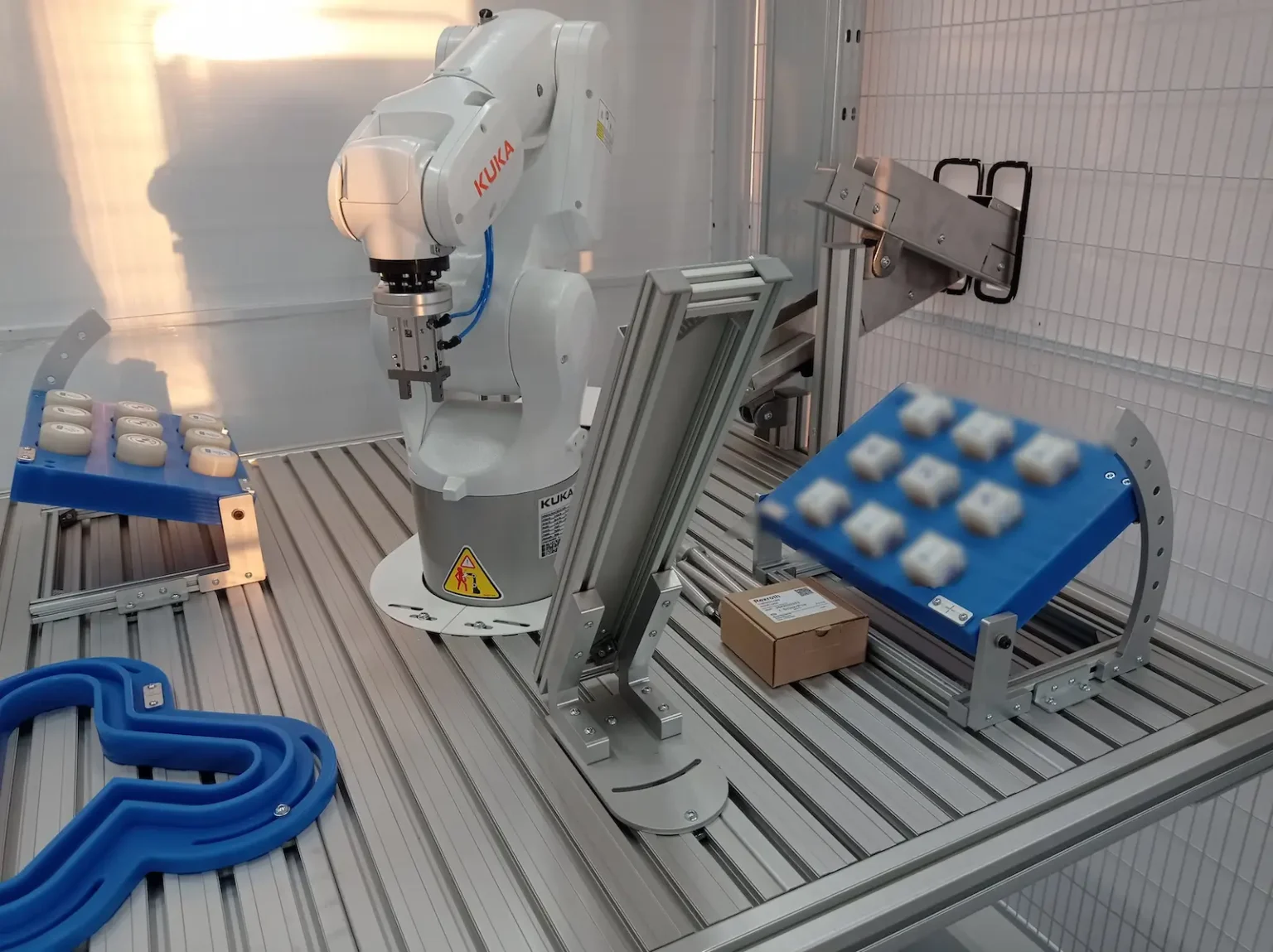Goals
- Setting up industry-standard training cells to train new entrants
- Covering the training needs of all jobs, from operators and battery maintenance to engineers
- Speeding up the ramp-up phase of production with trained staff
Challenges
- Understanding and applying the automotive manufacturer's strict industry standards
- Integrating a wide range of robot designs and tasks into a single education system
- Design cells that simulate real industrial environments and are safe for training purposes
Solution
- Our staff have attended several training courses abroad in Germany in robot programming, PLC and HMI to learn industry standards
- The mechanical design and offline programming is based on the car manufacturer's standards
- A total of 12 training cells were delivered, three different types with UR and KUKA robots
- The construction was carried out as a greenfield project
- Commissioning and handover was completed on time and to industry standards
Results
- The training cells are built to industry standards, so workers gain the knowledge they need for a real manufacturing environment
- With trained operators, production ramp-up can be completed in weeks
- The efficiency of the ramp-up phase has increased by at least 30%, contributing to a production benefit of € million
- The investment is also a forward-looking, environmentally conscious development, as the knowledge acquired during the training will also reduce the rate of defects and waste, thus optimising the use of materials and energy.
Detailed description of the project
In East-Hungary the aim of the new automotive factory was to have a skilled workforce with practical knowledge available from the start. To this end, IDM Systems Zrt. was commissioned to design and build robotic training cells.
As a first step in the project, IDM experts familiarised themselves with the customer's automotive standards, for which they attended several professional training courses in Germany on robot programming, PLC and HMI standards. This was followed by the preparation and design phase, during which our mechanical engineers and programmers developed cell concepts according to the manufacturer's specifications and prepared the program codes in an offline environment. The design process was carried out in collaboration with the customer to meet the partner's needs as much as possible.
Three types of training cells were designed: collaborative Universal Robots cells and industrial robot cells with smaller and larger KUKA robots, each with specific training functions, from simple pick-and-place tasks to complex sensory operations. Cells with increasing levels of complexity and expertise:
UR5e collaborative robotic cells (2 pcs)
- Cube pick-and-place tasks
- Palletising with cubic and cylindrical pattern cube
- Baseline measurement
- Tracking with a pen
- Tower light control

KUKA KR 4 R600 industrial robotic cells (4 pcs)
- Cube pick-and-place tasks
- Palletising with cube sample piece
- Baseline measurement
- Tracking with a pen
- Tower light control
- Automatic program execution on industrial robots
- Management of T1-T2 auto modes
- Safety door lock use
- Special design: the adjacent cells' drop zones lead into each other, allowing for more complex exercises

KUKA KR 22 R1610-2 industrial robotic cells (6 pcs)
- Side-drawing on a curved plate
- Pen drawing on straight and curved tables
- Baseline measurement
- Unloading and finding a cube using a sensor on the Programming table
- Cube palletising and depalletising
- Automatic program execution on industrial robots
- Management of T1-T2 auto modes
- Safety door lock use
- Factory standard-based cell control, program execution and standard HMI management

After the greenfield project was commissioned, the robotic training cells were successfully handed over according to industry standards. Thanks to the new system, operators, line managers and engineers can acquire the necessary practical knowledge before production starts, resulting in significant time and cost savings during the ramp-up phase. This investment not only increases productivity, but also supports the efficiency of production processes in a sustainable, environmentally conscious way in the long term.



